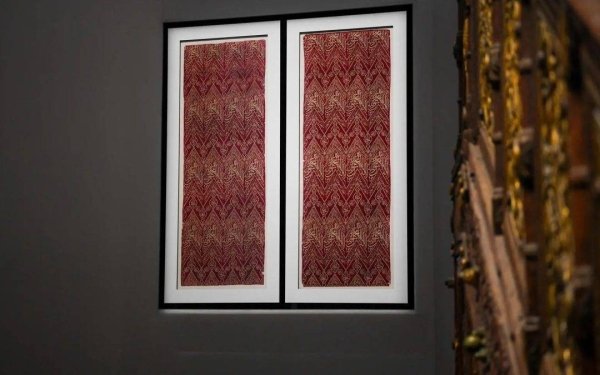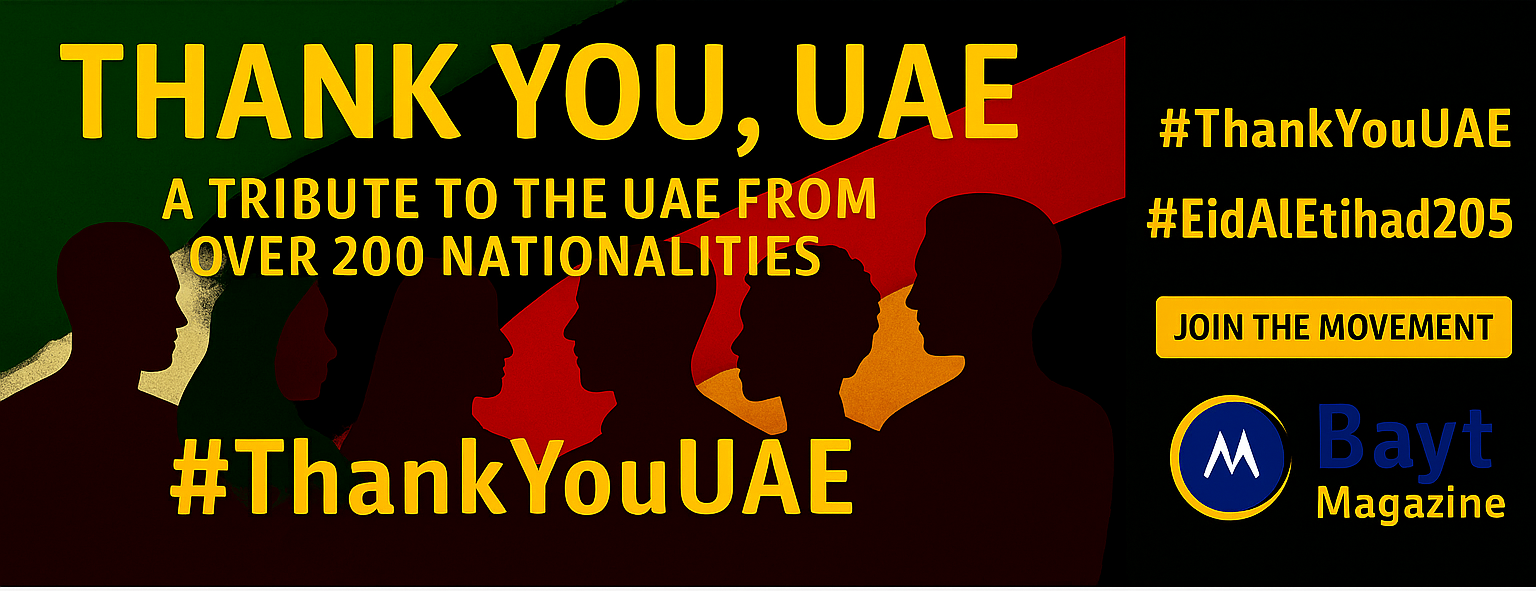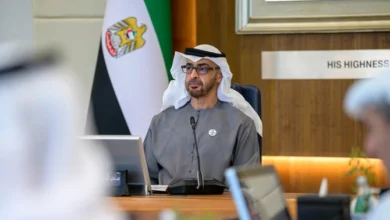
Sacred Kaaba Interior Textiles Grace Jeddah Art Exhibition
The Islamic Arts Biennale in Jeddah marks a historic milestone by showcasing rare interior coverings from the Kaaba. “And all that is in between,” an exhibition at King Abdulaziz International Airport, displays two masterpieces from the Kaaba’s interior kiswa from the 16th century AD.
The extraordinary textiles showcase intricate geometric patterns in ivory or yellow on a red background, continuing a centuries-old tradition. The National Museum of Asian Art’s collection features a remarkable piece that artisans likely wove in Bursa during the 18th-19th centuries AD. More than 500 pieces and ancient artifacts from the Vatican are displayed at this exhibition, which proves the rich Islamic craftsmanship and spiritual symbolism that has enhanced the holy site through history.
Rare Kaaba Interior Coverings Reveal Hidden Islamic Heritage
The interior textiles of the Kaaba tell a different story from its familiar black exterior coverings. These rare artifacts are the foundations of Islamic heritage and date back to the 10th century AH (16th century CE).
Three wooden columns support the Kaaba’s ceiling, and craftsmen adorned them with detailed coverings. Ottoman records show these columns had special names—’Hannan, Mannan, Dayyan’—which became part of their decorative heritage.
The interior coverings look nowhere near like the black and gold exterior kiswa. They feature:
- Intricate geometric patterns in ivory or yellow against a vibrant red backdrop
- Narrow bands inscribed with verse 144 from Surat Al-Baqarah
- Unique designs that look by a lot different from their exterior counterparts in both form and style
The interior textiles didn’t follow the yearly replacement schedule of the exterior kiswa. The core team changed them only when a new Ottoman Sultan took the throne. On top of that, the materials and production sites changed throughout Islamic history. The Mamluks first made them in Cairo workshops until the Ottomans moved production to Constantinople after conquering Egypt in 1517.
A remarkable piece now sits at the Islamic Arts Biennale. Craftsmen likely wove it in Bursa, Turkey, between the 12th and 13th centuries AH (18th–19th centuries CE). Sultan Suleiman the Magnificent ordered some of the earliest known interior coverings. One example from 950 Hijri (1543/44 CE) still exists today.
These textiles carried deep spiritual meaning after use. The team preserved them carefully instead of cutting them into pieces like the exterior coverings. The interior kiswa protected the sacred space and showed the artistic skill and religious dedication of each era’s finest craftsmen.
Islamic Arts Biennale Unveils 16th Century Textile Treasures
The Islamic Arts Biennale 2025 marks a groundbreaking cultural milestone by unveiling ancient textile treasures never shown before. King Abdulaziz International Airport’s Western Hajj Terminal in Jeddah hosts this remarkable exhibition from January 25 to May 25, 2025. “And What Is Between Them,” a phrase found throughout the Quran, serves as the theme that connects past, present, and future.
Visitors begin their trip through seven unique exhibition spaces that cover 100,000 square meters. The AlMukarramah section holds the most sacred artifacts, including historical objects from the Kaaba and rare Ottoman-era photographs and films.
More than 30 international collections contribute their treasures to the exhibition. The Kaaba’s interior coverings represent the pinnacle of Islamic craftsmanship. These textiles come from a time when decorative elements covered not just the walls but also the three wooden columns that supported the Kaaba’s ceiling.
The Islamic Arts Biennale is a chance to see objects that were once available only to a select few. The interior kiswa pieces are more than decorative elements – they embody deep devotion. Each piece displays its era’s artistic style through geometric patterns and calligraphy. The inscriptions feature verse 144 from Surat Al-Baqarah, which guides Muslims to face the Kaaba during prayer.
The exhibition’s collection goes beyond textiles to include historic manuscripts and Quranic texts from the first century of Hijrah. A massive single-volume Quran from around 1420 stands out as a masterpiece of calligraphy. Its 372 leaves showcase 11 lines of thuluth script on each page.
The Islamic Arts Biennale connects traditional and modern Islamic art forms through its carefully selected artifacts. This exhibition preserves cultural heritage and helps people understand the artistic traditions that shaped Islamic civilization across centuries.
Historians Trace the Evolution of Kaaba’s Interior Decoration
The artistic decoration inside Islam’s holiest structure tells a remarkable story of change through the centuries. Each ruling dynasty brought its own artistic traditions, leaving its mark on this sacred space. Researchers have documented fascinating changes in materials, techniques, and designs used to adorn the Kaaba’s interior.
The Kaaba’s interior walls showcase white marble that extends halfway to the roof, complemented by darker trimmings near the floor. A black cloth with gold Quranic verses adorns the top corners. Embroidered silk lines the ceiling, and the floor displays pristine white marble with colored sections.
The colors inside the Kaaba have changed significantly. The early Islamic period saw the use of multi-colored luxurious textiles instead of today’s familiar black coverings. Black exterior coverings became standard around the 12th century. The distinctive belt (hizam) around the Kaaba’s upper part came next. Saudi rule in the early 20th century introduced the now-famous black, gold, and silver color scheme.
Sacred textile production moved to different Islamic centers over time:
- Egypt and Syria led production during the Mamluk era
- Bursa and Istanbul hosted specialized workshops in the Ottoman period
- Mecca became the exclusive manufacturing site in the early 20th century
Saudi King Abdul Aziz made a historic decision in 1927 by establishing a dedicated kiswa factory in Mecca. The Umm al-Joud factory has created these sacred textiles since 1962.
Three wooden pillars stand inside, supporting a dual-layered ceiling with inner and outer roofs. These impressive columns measure 150 cm in circumference and 44 cm in diameter. Square wooden bases with detailed carvings support each pillar. Three reinforcing rings strengthen these columns, which continue a tradition dating back over 1,350 years to when Abdullah bin Zubair installed the original pillars.
Calligraphic designs have remained a constant element through these changes. Each textile features carefully selected Quranic verses that reflect its specific purpose and location.
The exhibition of these rare Kaaba interior coverings represents a defining moment in Islamic cultural preservation. These sacred textiles are silent witnesses to centuries of artistic progress, religious devotion, and masterful craftsmanship. These coverings tell a compelling story of cultural heritage from their creation in specialized workshops across the Islamic world to their current display at the Islamic Arts Biennale.
These artifacts are particularly valuable because they are among the few surviving examples of interior decoration from Islam’s holiest site. Their distinctive geometric patterns, carefully chosen Quranic verses, and rich color schemes are quite different from the familiar exterior kiswa. They give us a unique window into historical Islamic artistry.
The textiles showcase the deep spiritual connection between artisans and their sacred work through different eras. The careful attention to detail in selecting materials and executing calligraphy shows their steadfast dedication to honoring the Kaaba’s sanctity. This exhibition serves two purposes: it preserves irreplaceable cultural artifacts and allows more people to see these historically important pieces.
These interior coverings are more than just decorative elements. They are enduring symbols of Islamic artistic tradition, spiritual devotion, and cultural continuity that connect past and present through their timeless beauty and sacred purpose.




